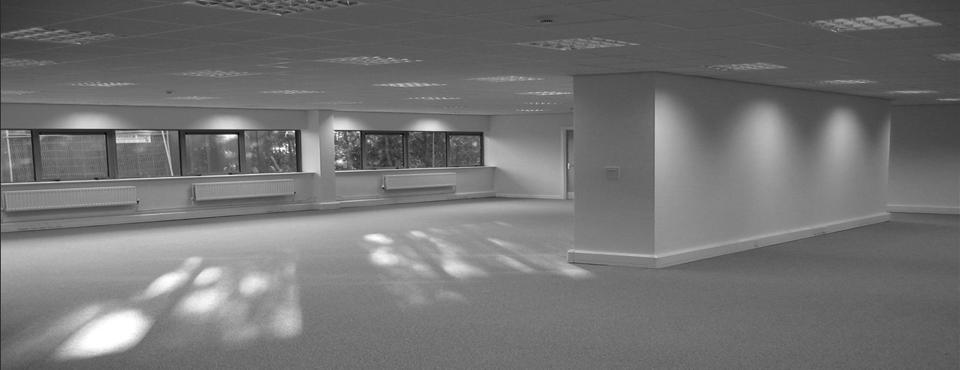
Office vacancies in the Netherlands: Alternative workplace strategies and the role of railway stations
 In 2013, about 15 percent of the offices in the Netherlands were vacant. However, this share varies considerably over space. In Amsterdam, the vacancy rate was 18 percent, while in other cities like Wageningen, the vacancy rate was only a few percent. In Europe, Amsterdam is the city with the second highest office vacancy rate, after Athens. In Figure 1 it can be observed that the share of empty office space was relatively small until 2001, but is growing since.
In 2013, about 15 percent of the offices in the Netherlands were vacant. However, this share varies considerably over space. In Amsterdam, the vacancy rate was 18 percent, while in other cities like Wageningen, the vacancy rate was only a few percent. In Europe, Amsterdam is the city with the second highest office vacancy rate, after Athens. In Figure 1 it can be observed that the share of empty office space was relatively small until 2001, but is growing since.
A certain share of empty offices is inevitable. Firms grow and decline and therefore have to move now and then. The search and matching process takes some time and implies a minimum vacancy rate of a few percent. However, an average rate of about 15 percent seems way above this ‘natural’ vacancy rate. It is therefore argued that a main reason for the relatively high vacancy rate in the Netherlands is the economic crisis. Because office buildings are durable, it is not so easy to reduce the stock of office space in times of low demand. It may be expected that when demand increases again, the office vacancy rate will decrease.
However, it is unlikely that this explains why Amsterdam is among the cities in Europe with the highest vacancy rates. It has been argued that economic risks of investments where severly underestimated by developers, investors and municipalities alike, leading to a substantial increase in office space after 2001. Also other trends, like an ageing population and a more efficient government, seem to imply that the demand for offices will not strongly increase in the near future.
Another trend is that alternative workplace strategies (‘Het Nieuwe Werken’ in Dutch) become more important. People work more from home and meet each other at offices with flexible working spaces close to railway stations, in order to reduce CO2 emissions caused by cars. A substantial number of firms, such as Microsoft, KPN and Unilever, are implementing these strategies to some extent. Because of these workplace strategies, it seems likely that the overall demand for offices will decrease even more. Another important implication is that offices close to railway stations should have become more attractive in the last years, because these offices offer employees sustainable travel opportunities.
A way to measure this increased demand for offices close to railway stations is to look if office rents are higher near stations or if vacancy rates are lower. If office rents are sticky and do not immediately respond to changes in demand, it is likely that office vacancies will say something about the attractiveness of locations and buildings.
Using data from Jones, Lang and Lasalle (JLL) and DTZ Zadelhoff, I try to explain the vacancy rate by the proximity to railway stations, but it appears that the vacancy rate close to stations is not higher or lower than at other locations. This also holds for locations close to Intercity stations. It might be shown that characteristics of buildings, such as the age of the building, and whether the building is sold or rented, are much more important determinants of office vacancies than railway accessibility. We have seen an increase in the construction of office buildings close to stations in the Netherlands the last decade (for example close to stations in ‘s-Hertogenbosch, Amersfoort and Amsterdam Zuid), but the employment close to railway stations has hardly increased. This may suggest that these office locations mainly attract firms from other similar locations relatively close to stations.
The effects of alternative workplace strategies may also lead to higher office rents close to railway stations. I therefore also investigate the effect of railway stations on office rents. I only find weak evidence that office rents are higher close to railway stations, but again, it is by far not a key determinant of office rents.
To conclude, more and more firms seem to employ alternative flexible workplace strategies that promote flexible workplaces and define a crucial role for public transport. This will likely lead to a lower demand for offices in the future and but may lead to an increased attractiveness of offices close to railway stations at the same time. However, the current research does not indicate that these strategies seem to shape current locational preferences of firms. I do not find any effect of railway accessibility on office vacancies and only weak evidence for higher rents near stations. What is more, because employment close to stations has hardly increased in the last years, this may imply that new office locations mainly attract firms from other similar locations relatively close to stations.
This blog is based on a policy document by Karst Geurs, Hans Koster and Gert de Visser.
